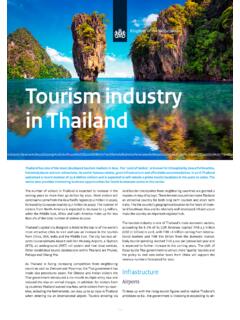Transcription of Traditional Foods in Native America - Part I
1 Part ItradItIonal Foods In Native America A compendium of stories from the Indigenous food sovereignty movement in American Indian and Alaska Native communities food is at the center of our it feeds our bodies and it feeds our spirit. Vanessa Cooper (Lummi)Northwest Indian College - Traditional Plants & food Program Acknowledgements The Native Diabetes wellness Program expresses gratitude and thanks to Chelsea Wesner (Choctaw), American Indian Institute, University of Oklahoma, who collected the interviews that inspired this report. Ms. Wesner wrote the report in collaboration with the National Indian Health Board and the Native Diabetes wellness Program. All collaborators would especially like to thank staff and tribal members from the programs featured: Mohegan Foodways (Mohegan Tribe), Mvskoke food Sovereignty Initiative (Muscogee (Creek) Nation), Oneida Community Integrated food Systems (Oneida Nation), Seven Arrows Garden (Pueblo of Laguna), Suquamish Community Health Program (Suquamish Tribe), and the Traditional Plants & food Program (Northwest Indian College).
2 This report would not have been possible without the sharing of their stories and diverse experience in restoring Traditional food systems. Suggested citation: Centers for Disease Control and Prevention. (2013). Traditional Foods in Native America : A Compendium of Stories from the Indigenous food Sovereignty Movement in American Indian and Alaska Native Communities Part I. Atlanta, GA: Native Diabetes wellness Program, Centers for Disease Control & Prevention. 1 tAble of contents 3 Purpose and Background 3 Traditional Foods Programs and food Security 4 Methods 4 Key Findings and Shared Themes feAtured Traditional Foods ProgrAms: PAges 6-31 6 Mohegan Foodways - Mohegan Tribe 12 Mvskoke food Sovereignty Initiative (MFSI) - Muscogee (Creek) Nation 17 Oneida Community Integrated food Systems (OCIFS) - Oneida Nation of Wisconsin 21 Seven Arrows Garden - Pueblo of Laguna 26 Suquamish Community Health Program - Suquamish Tribe 29 Traditional Plants & food Program - Northwest Indian College (NWIC) Traditional Foods reciPes.
3 PAges 32 - 42 33 Recipes from the Oneida Nation of Wisconsin 36 Recipes from the Suquamish Tribe 38 Recipes from the Muscogee (Creek) Nation 43 Contact Information 44 Additional Resources 45 References PurPose And bAckground Commissioned by the Centers for Disease Control and Prevention s (CDC) Native Diabetes wellness Program (NDWP), this report highlights Traditional Foods programs in six culturally and geographically diverse American Indian and Alaska Native communities. For decades, American Indian and Alaska Native communities have been reclaiming Traditional Foods and practices as an integral part of the Indigenous food sovereignty movement, which embraces identity and history, tribal sovereignty, Traditional ways and cultural practices to address health.
4 For more than a decade, the CDC s NDWP has supported tribally driven efforts to promote health and help prevent type 2 diabetes in American Indian and Alaska Native communities. Among many promising efforts, such as the highly acclaimed Eagle Books series and the Diabetes Education in Tribal Schools K-12 Curriculum (DETS), a particularly innovative approach to diabetes prevention has been the Traditional Foods Program. Supporting the Indigenous food sovereignty movement to reclaim Traditional Foods systems, NDWP also focuses on Traditional physical activity and culturally based social support in tribal communities to address complex health disparities, such as diabetes, and social determinants of health. From 2008 to 2014, the NDWP has supported 17 tribal communities through cooperative agreements that make up the Traditional Foods Program.
5 The 17 partner grantees are representative of tribes and tribal organizations from coast to coast. Each site has taken a unique approach to restoring and sustaining a healthful and Traditional food system. Throughout the course of this program, the NDWP has learned even more the great value these projects provide in addition to health promotion and diabetes prevention. The projects address critical issues such as food security, food sovereignty, cultural preservation, and environmental sustainability. Consequently, in addition to highlighting stories about the NDWP Traditional Foods Program partner grantees (see ), the NDWP wanted to learn more about Traditional Foods programs from across Indian Country. At first, the gathered stories were to help educate the NDWP about how to continue this work.
6 However, the tribal representatives who told their stories had other ideas. They wanted their stories to be shared with all who could learn from them, with the hope that those who heard the stories would then share stories of their own. The six stories presented here are the first in a series of three story collections to achieve that goal. To collect this initial compendium of interviews and stories, the NDWP partnered with the National Indian Health Board (NIHB) who in turn contracted with the author, Chelsea Wesner. Based on interviews with key persons in each community, the stories illustrate how six Traditional Foods programs are providing food security efforts that are tribally-supported, culturally significant, and sourced in their very own communities.
7 The programs represented here are a diverse network of communities from harsh desert climates to fertile coastal lands. Traditional Foods Programs and food Security Traditional Foods programs play a promising role in addressing food insecurity in Native American communities, further supporting type 2 diabetes prevention efforts among American Indian and Alaska natives (AI/AN). A rare disease 60 years ago, the incidence of type 2 diabetes is now higher among AI/AN adults and children than any other racial and ethnic group in the United States (CDC, 2011). Of great concern, AI/AN children, particularly those living on or near reservation and tribal lands, are more likely to experience type 2 diabetes, food insecurity, and obesity in comparison to all children in the of similar ages (Gordon & Oddo, 2012).
8 Risk factors for type 2 diabetes, such as food insecurity, food environment, and poverty (Gordon & Oddo, 2012; Seligman et al., 2007; Berkowitz et al., 2013; Jones-Smith et al., 2013), pose significant barriers to type 2 diabetes prevention in Native American communities. While adhering to a healthful diet is an important factor in diabetes prevention and 3 control for those who have diabetes, it requires the availability and affordability of healthful food . Availability of Healthful food In 2008, one in four AI/AN households were food insecure, and AI/AN households with children were more than twice more likely to experience food insecurity than non-AI/AN households with children (Gordon & Oddo, 2012). food deserts, a more serious degree of food insecurity, exist in many of the more isolated reservation and tribal lands, requiring people to travel long distances to supermarkets (Gordon & Oddo, 2012).
9 A study in 2012 by Bauer et al., found 40 percent of families living on the Pine Ridge Reservation food insecure. In the same study, parents reported experiencing multiple barriers to accessing healthful food . Much of the food available in the home was purchased at convenience stores on or near the reservation. A similar study in 2013 found 29 percent of children and 45 percent of adults food insecure in four AI/AN communities in the Southwest, suggesting interventions that address the affordability of healthful food and transportation to obtain fresh food are needed (Mullany et al, 2013). Affordability of Healthful food food insecurity is further compounded by poverty. In 2010, more than 24 percent of AI/AN households were below the Federal poverty line in comparison to 15 percent of all households (Gordon & Oddo, 2012).
10 While food insecurity is associated with type 2 diabetes and poverty (Seligman et al., 2007), it is also associated with a food environment that promotes obesity in households with children (Nackers & Appelhans, 2013). A recent study suggests changing the food environment alone is not sufficient in changing healthful food intake among lower income families (Jones-Smith et al, 2013). food environment in this study was the density of healthful and unhealthful food vendors in a specific area (Jones-Smith et al, 2013). While unhealthful food environments in this study were associated with a higher prevalence of obesity, lower income participants living in healthful food environments were more at risk for obesity. Researchers suggest this inverse relationship might be explained by purchasing power.



















